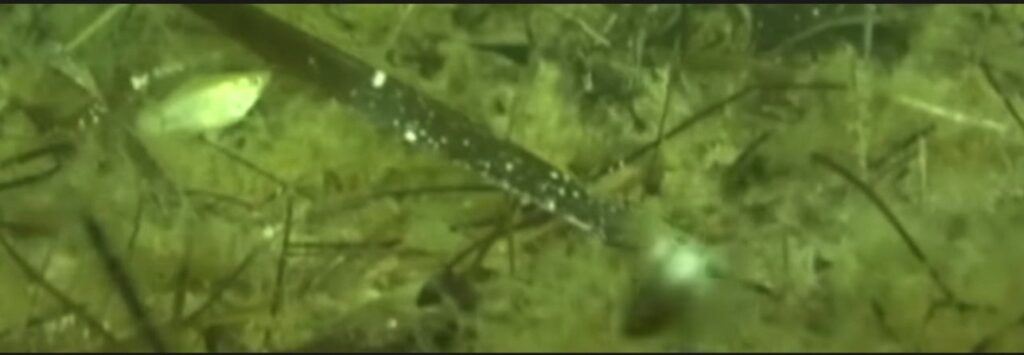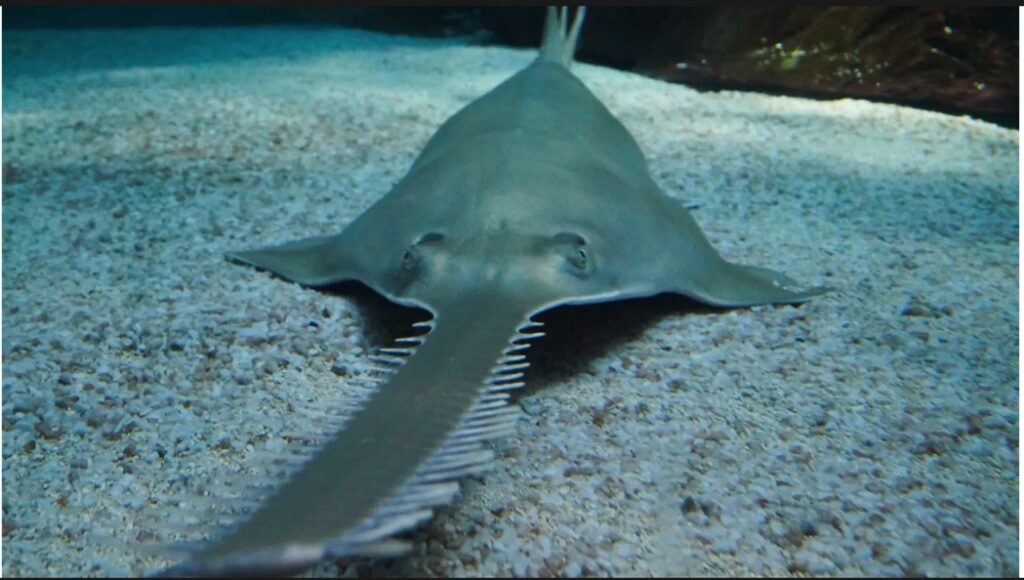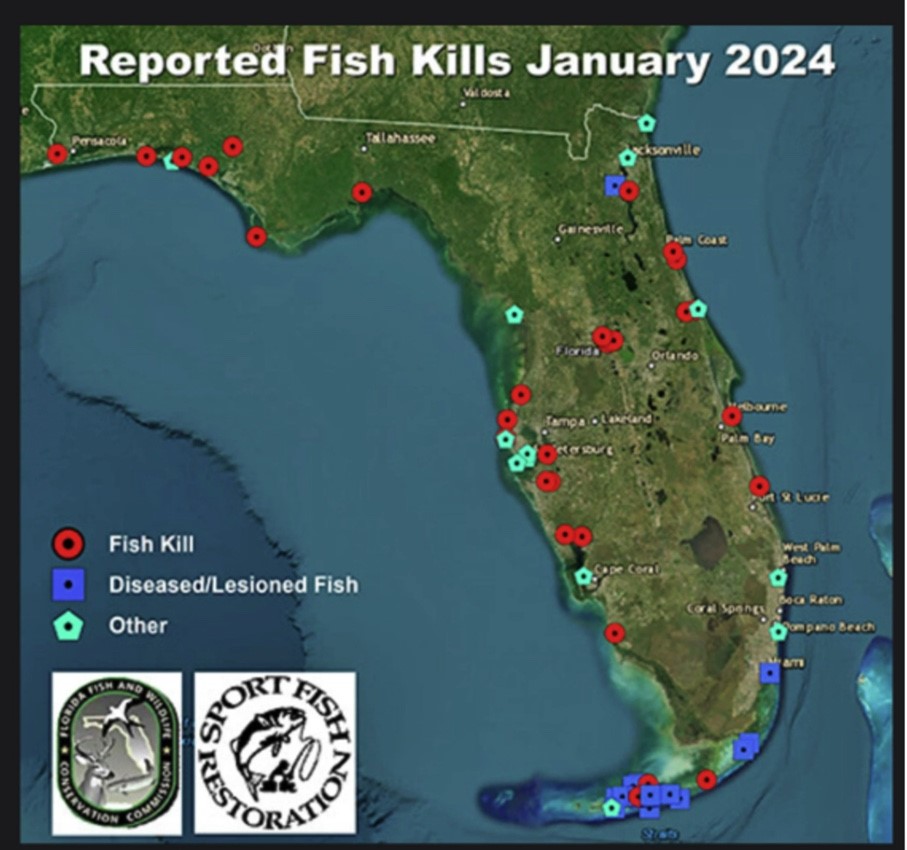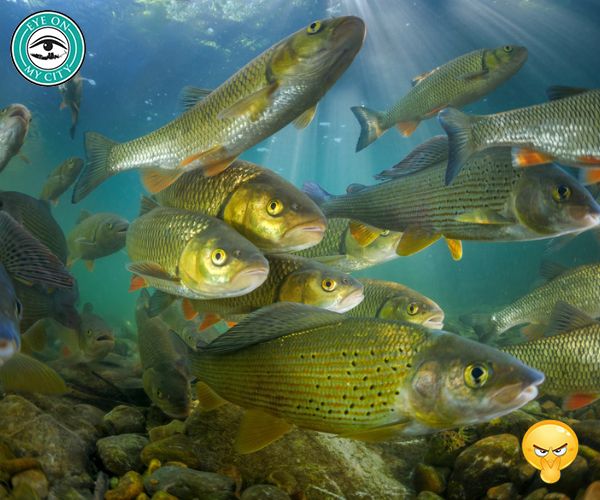Let me know in the comments: what does the mysterious manner of death in today’s first story remind you of? I know what it reminds me of, but I don’t want to say it.
Patch published an article yesterday headlined, “Florida Fish Spin In Circles Until They Die, And No One Knows Why.” This major news story has somehow been buried since November. I even live in Florida, and I never heard about this developing story until yesterday, when I was researching something completely different and ran across a this eye-opening ABC-10 video report:

CLIP: Officials looking into bizarre behavior by fish in Florida Keys (4:54).
Head-scratching scientists of course remain baffled, even though they instantly knew everything there was to know about novel SARS-CoV-2. Here’s how Patch described the latest mystifying conundrum:
Some mystery is causing dozens of species of Florida fish to spin in tight circles until they beach themselves and die. They appear disoriented and confused, swim with their heads out of the water at times, alternatively bob and sink, and show symptoms of equilibrium issues that researchers theorize could be causing them to lose their balance and swim on their sides or upside down. As of this month, the behavior has been reported in 44 species of fish, including rays and sharks, Goliath grouper, tarpon, snook, mullet, gray snapper, ballyhoo, pinfish, sand perch, needlefish, pilchards, grunts, blue runners and the critically endangered smalltooth sawfish.
The Ocean First Institute said “spinning fish disease is leading to mass mortality events,” which are a “big blow to the already impacted Florida Keys.” Mary McCauley of Cudjoe Bay, whose back yard has access to the beach, said a beached sawfish appeared sick and disoriented, “like there was something wrong with [its] brains.”
Like zombie deer!
The article mentioned, correctly, there are many independent reports and videos cropping up online, like this Instagram video showing a small school of Florida snook splashing around crazily and dying. So, the infection or transfection or whatever it is, it’s not just being seen in an unimaginable number of different fish species, but it is also becoming common enough for lots of random fishermen to happen upon.

They’ve ruled out the usual suspects, red tides and low oxygen levels. It’s not like anything they’ve seen before; the whole thing is incredibly strange. Like the fact that it’s crossing so many species; that is weird. “One interesting thing about this is so many different fishes are being affected,” explained marine science professor Mike Parsons. “So that led to our hypothesis that maybe it’s something in the water, maybe dissolved in the water.”
Watch the water. Okay. But for what?
Scientists have noted higher levels of a microscopic algae called Gambierdiscus, and their current working theory is the algae is somehow involved. Water samples collected from near spinning fish showed 1,000 Gambierdiscus cells per liter — far above the normal range of 30 to 40 cells per liter.
But they don’t know whether the Gambierdiscus algae is causing the spinning death wheels, or just another symptom of the problem.
Months later, the story is slowly seeping into corporate media, which is obscuring the narrative by leaning into the “sawfish” angle. Forbes, for example, finally reported the story yesterday (paywalled), headlined “Rare Sawfish Deaths Baffle Scientists In Florida Keys.”
Baffled! Not only was it late, but Forbes didn’t mention any “other fish” till the sixth paragraph, and then just barely.
But Forbes’ article included a helpful map. Check out the locations of reported fish kills:

Florida just added $2 million to its 2024 annual budget to study the problem and to try to figure out what’s going on before an entire tourist industry spins out and dies. I just hope they’ll check everything. Even the things sold-out, pharma-captured corporate media refuses to discuss.
My brain has been racing to connect the dots; and there are a lot of dots I could connect. But I’ll just show you one dot, from an article published in the Keys Weekly in April of last year (2023):

Weird, right? You aren’t going to believe this next part, or why it never made bigger news. (Well, you could probably guess why.) But anyway, prepare yourself, then behold this eye-popping paragraph from the Drugged Fish story:
Scientists and volunteer guides and anglers sampled redfish in nine of Florida’s most important estuaries. Pharmaceuticals were found in all of the estuaries sampled, with an average number of 2.1 drugs per fish and a maximum of five. Only seven out of the 113 sampled fish had zero drugs in their system. On average, 25.7% of the fish exceeded a level of pharmaceuticals considered safe, which equates to one-third of the therapeutic levels in humans.
Did you get that? Only 7 fish out of 113, or six percent, weren’t drugged! In other words, ninety-four percent of the tested fish were drugged! And not only drugged, but drugged with between two and five prescription medicines. I don’t know what to say about those shocking facts, except I hope the fish are having a good time.
At this point, you may be wondering, as I did, which drugs?
The article answered:
Cardiovascular medications, opioid pain relievers and psychoactive medications were most commonly detected (from highest to lowest detections). The antiarrhythmic medication flecainide and the opioid pain reliever tramadol were detected in over 50% of the redfish. The antipsychotic medication flupentixol was detected above safe levels in one in five of the redfish samples. These are very concerning levels of exposure for redfish.
Wow. You know what, though? These are also very concerning levels of exposure for other species, too. How about us? The humans?
Are you with me so far? Good. Now answer this question.
The federal government has been, and still is, buying billions of useless and unwanted doses of mRNA spike protein genetic injections. The government continues buying vatloads of the stuff even though, starting early last year, people stopped taking them. So here is the question: where did the expired and unused mRNA juice go?
Try to follow me here. If last April fish were showing high levels of multiple types of common pharmaceuticals, then it is obvious that lots of drugs are somehow getting into the ocean and from there into our aquatic friends. How? Who knows, probably lots of ways, but that doesn’t matter right now. The much more important question is … they couldn’t have been that stupid, could they? (Don’t answer that.)
Somebody please tell me the vast amounts of discarded spike-protein-making, genetic-therapy serum didn’t somehow wind up in the ocean like the opioids and the anti-psychotics obviously did. They’re properly disposing of the mRNA right? They’re burning it up, right? Or at least burying it in a lead casket or something, right? RIGHT?
There’s no way they could be flushing their experimental mRNA serum down the toilet, or dumping it into landfills and stuff? Without knowing how the watered-down gene juice could affect other species? Like fish?
Look, I’m not a fish scientist. I’m just a lawyer, I get it. But I hope they test the fish for spike protein. Spike protein and prions. At least.
Next, the scientists studying spinning fish disease should call up the scientists who tested the drug-addled redfish and compare notes. Finally, with or without the mRNA drugs, I suspect the media is avoiding the drugged fish story more keenly than it ignores the Biden bribery scandal because it is already a bona fide environmental disaster. So much for protecting the environment, if that means we have to stop drugging fish.










